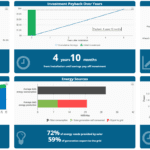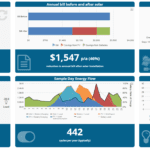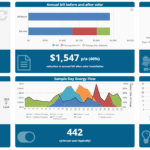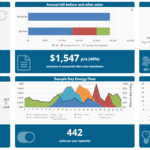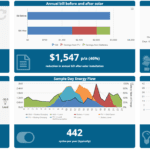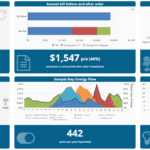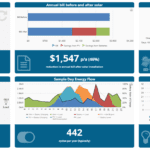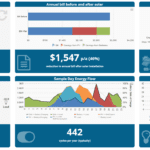Home battery storage prices are coming down, bringing this increasingly sought-after technology closer to mass affordability. Early adopters are already getting their batteries installed around the country, and it’s only a matter of time before more solar homes begin following suit. How much further do battery storage prices need to drop before they make pure financial sense in Australia?
Recent developments on the battery pricing front
LG Chem seems to be one of the companies leading the charge on cost reductions, having recently introduced the next generation of its RESU battery banks. By our estimates, LG Chem’s RESU10, which has a nominal capacity of 9.8 kilowatt-hours (8.82kWh of usable storage), will retail for about $10,000-$12,000 fully installed (about $1,100/kWh). Solar panel manufacturer Trina have also recently introduced a battery bank solution of their own (the Powercube 2.0) with 6.4kWh of (usable) capacity and an ~$8,000 price point (about $1,200/kWh). Alpha ESS, meanwhile, has an economy-class, all-in-one storage unit (the Alpha-ESS Eco) that rivals even these on price, with 8.64kWh of usable capacity for $8,000 installed (about $925/kWh). These prices represent a significant reduction from the $1,500-$2,000/kWh figures commonly seen over the last year or so.
Compare solar & battery storage options in your area: Complete the Quote Comparison request form to the right of this page.
We should note that the prices we’re discussing here are for lithium batteries with 10-year warranties and 60% ‘end of life‘ retained capacity – so the comparisons are more or less apples-to-apples. Batteries with better performance specifications are available (e.g. 80% retained capacity at end of life), but tend to be on the pricier end of the spectrum.
| Battery bank | Image | Usable storage capacity | Indicative price (fully installed with inverter)* | Indicative price per kWh of capacity (fully installed with inverter) |
| Alpha ESS Storion-Eco | |
8.64kWh | $8,000-$10,000 | ~$900-$1,150/kWh |
| LG Chem RESU10 | 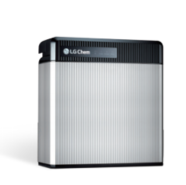 |
8.82kWh | $10,000-$12,000 | ~$1,100-$1,360/kWh |
| Tesla Powerwall | 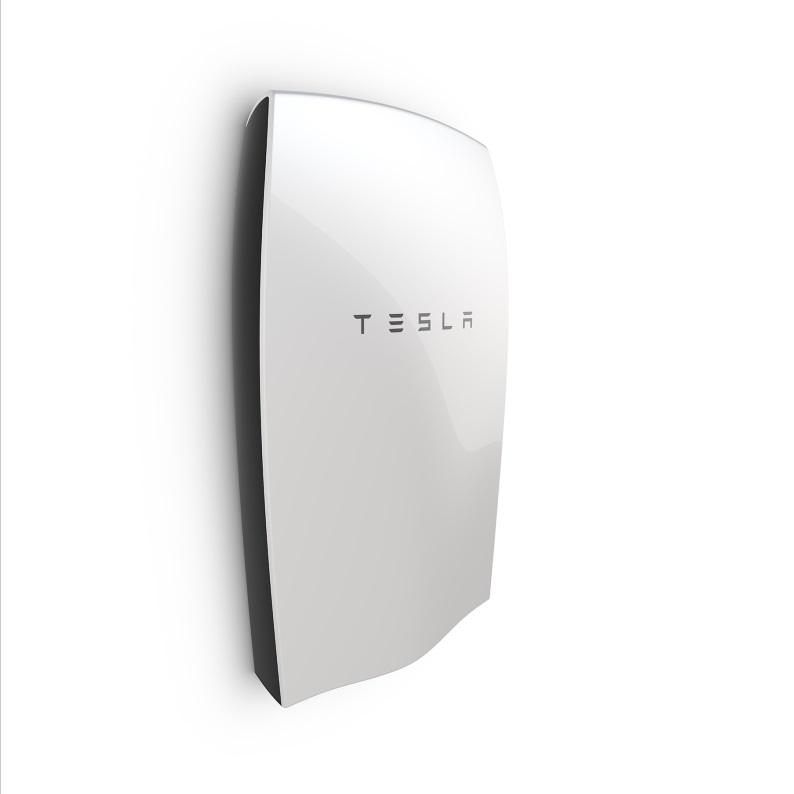 |
6.4kWh | $11,000-$13,000 | $1,500-$2,030/kWh |
| TrinaBEST Powercube 2.0 | 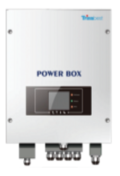 |
6.4kWh | $8,000-$10,000 | ~$1,200-$1,560/kWh |
*These prices are our own rough figures based on offers we’ve seen. Actual out-of-pocket costs will vary depending on the company that sells the system. If you have feedback, please email the author.
A note about lithium batteries
Lithium has established itself as the most prolific and widely-used battery chemistry type for residential applications in Australia (and likely the world as well). In fact, of the 20 different battery brands currently included in our Battery Storage Product Performance Comparison Tool, 17 use lithium batteries; of the remainder, two (Redflow & Imergy) are flow batteries and one (Aquion) is a ‘saltwater’ sodium-sulphur battery. At present, we haven’t listed any lead acid batteries mainly because there are so few companies targeting the residential grid-connected system market with lead-based battery banks (Ecoult is one exception, but their residential product not being pushed and we’ve been unable to obtain specifications on it so far).
Are these prices low enough? Let’s do the maths
Estimating battery system pricing can be tricky, as the components required vary with the circumstances of individual households will differ. For example, are we talking the pricing for just the battery component of a brand new solar PV system, or about a battery retrofit to an existing system? If solar and batteries are being installed at the same time, will they use a single hybrid inverter, or will there be separate inverters for the batteries and the solar panels (a ‘one box’ or ‘two box’ solution)? Or what about if we’re talking about a battery retrofit for an existing solar system that also encompasses the replacement of the existing inverter? These are all important considerations for you as the potential purchaser of a battery storage system.
For simplicity’s sake, however, let’s assume we’re talking about the installation of a battery with a new inverter (this is the assumption we make for pricing in our Battery Storage Product Performance Comparison Tool), so that the prices quotes above – in the $900-$1,200/kWh range – are still relevant to our current investigation. (If you’re contemplating a battery retrofit that doesn’t include a new inverter, you may end up paying less.) How do the returns stack up?
What we’re looking for: The point at which batteries reduce system payback times
All the analysis we’ve done or seen to date indicates that a ‘solar only’ system is usually a better investment than a solar-plus-storage system (e.g. see here and here and here). Although solar power is very affordable in Australia, high battery price points mean that batteries have to work extra hard to earn their proverbial keep (ideally cycling more than once per day); the solar panels are the component of the system that delivers most of the savings.
At $1,500/kWh installed, batteries inevitably lengthen the payback period of a solar PV system; typically, the payback for a solar-plus-storage system at this price point will be 10 years+, meaning that the battery owner may not have broken even by the end of the 10 year warranty period. Below this price point, however, things start to get rosier. But at what price point does it make more financial sense to have batteries installed with your solar than not – that is, at what price does a battery storage bank reduce a solar system’s payback time?
Brisbane example
Let’s look at an example from Brisbane to see how reductions in battery pricing affect payback times & return on investment figures. We assume the home has the following characteristics:
- 30kWh/day energy consumption;
- Flat retail electricity tariff of ~$0.24/kWh (ex. GST);
- 5kW solar system for $5,700;
- 6.4kWh battery storage; and
- ‘Double peak‘ energy consumption pattern.
For the ‘base case’ payback period and ROI figures, we assume that the system is capable only of solar charging (i.e. using the solar panels to charge the batteries). We crunched the numbers using PVSell to determine payback periods at a range of battery price points (from $1,500/kWh down to $200/kWh).
The difference in annual savings for the solar only system was about $1,130; addition on the 6.4kWh of battery storage kicked this up to about $1,550 – a difference of about $400. This remained the same regardless of how much they paid for the battery bank.
Once we worked this out, we then did a bit of speculation how additional savings via tariff arbitrage (on time-of-use billing) and/or spot market trading could help to improve payback periods further – assuming either 20% or 30% savings on top of a solar charging only scenario. The results are laid out in the table below.
| Payback period
(Solar charging only) |
Return on investment
(Solar charging only) |
Payback Period (+20% savings)* | Payback Period (+30% savings)* | |
| Solar only | 4yrs 2mo | 20% | n/a | n/a |
| @$1,500/kWh | 10yrs 6mo | 10% | ~8yrs 9mo | ~8yrs |
| @$1,200/kWh | 9yrs 2mo | 11% | ~7yrs 6mo | ~7rs |
| @$1,000/kWh | 8yrs 2mo | 12% | ~6yrs 9mo | ~6yrs 3mo |
| @$750/kWh | 7yrs 1mo | 14% | ~6yrs | 5yrs 6mo |
| @$500/kWh | 6yrs | 17% | ~5yrs | ~4yrs 6mo |
| @300/kWh | 5yrs 1mo | 20% | ~4yrs 2mo | ~3yrs 1mo |
| @200/kWh | 4yrs 7mo | 22% | ~3yrs 10mo | ~3yrs 6mo |
*Assumed additional estimated savings from tariff arbitrage on time-of-use plans and/or spot market trading opportunities such as those possible through Reposit Power, carbonTRACK, Redback Technologies or Sonnen (amongst others) on certain retail electricity plans (such as Diamond Energy‘s GridCredits100 or a spot market-based solar FiT). The 20% and 30% additional savings are very rough, and are not based on actual case studies or modelling. Actual savings may be smaller or greater – we’re just trying to paint a picture of possibilities here.
Gallery: Output infographics from each battery pricing scenario (created using PVSell)
What to make of these numbers
1. Battery payback periods have not yet attained ‘no brainer’ status…
In the table above we note that it’s possible to have a 4yr 2mo payback period on a 5kW solar system costing $5,700. If you charge them only with solar, adding batteries on at current prices easily knocks the system’s payback period out to close to 10 years. Even at the lowest prices we’re currently seeing (about $900-$1,000/kWh fully installed), the payback period still sits between 7 and 8 years. This is certainly an acceptable figure for the right households, but it doesn’t yet quality as a ‘no-brainer’ in the way that solar alone does – we won’t reach that point until battery storage systems hit the $300-$500/kWh mark.
2. …but you can already buy battery storage system whose payback time is shorter than their warranty period
The good news here, as we’ve noted above, is that battery prices have come down enough for many battery products to pay themselves off within the span of their warranty. This means that while there may be more attractive investment opportunities out there, you’re not throwing your money away with the purchase of a battery bank.
3. Tariff arbitrage and spot price trading will speed up payback periods
The picture of batteries as an investment becomes rosier when we take into account the additional potential benefits of tariff arbitrage (i.e. charging batteries using grid electricity while prices are low on a time of use metering setup) and spot market trading (as is possible with a Reposit-equipped system under Diamond Energy‘s Gridcredits100 plan or with Urth Energy’s Urth Trader plan).
Both of these could reduce payback periods for batteries further, and such opportunities are likely to become more commonplace and attractive as time goes on. If these secondary uses for home batteries combined can add another 30% savings on top of what would be possible with solar charging only, payback periods start looking pretty good when battery prices reach about $750/kWh. Whether these options have the capacity to consistently deliver that great a level of savings is a question for a different analysis, but we don’t think this is an unreasonable number with the right circumstances.
4. What about the value of having a battery backup for your home (and other benefits)
Also missing from this discussion is the fact that batteries deliver non-monetary benefits to a home, including greater energy independence and the ability to keep the lights on even in the event of a power outage. This is surely worth something to solar households – and indeed, we’ve seen this value incorporated into financial modelling in the form of a 5% boost to annual savings.
So should I get batteries or not?
If you’re looking at batteries purely as an investment, then you might want to wait until costs come down a bit more. However, that’s not the only reason Australians are interested in battery storage. What we can say is that battery storage prices have dropped to the point where battery storage is financially tenable for households with a modest budget and the desire for a greater degree of energy independence. If you’re keen, now is a pretty good time to start looking around.
Want more info? Check out these resources
Compare solar & battery storage quotes from installers in your area instantly and for free
Learn more about battery storage: Check out our Battery Storage 101 page
Try our Solar & Battery Storage Sizing & Payback Estimator Tool
Check out our Battery Storage Product Performance Comparison Tool
See the rest of our calculators in our Calculator Resource Library
© 2016 Solar Choice Pty Ltd
- Why a big battery could be cheaper than a small battery with the federal rebate? - 19 June, 2025
- Heat Pump Costs – Solar Choice Price Index - 1 June, 2025
- Solar Panel Costs: Solar Choice Price Index | July 2025 - 1 June, 2025
